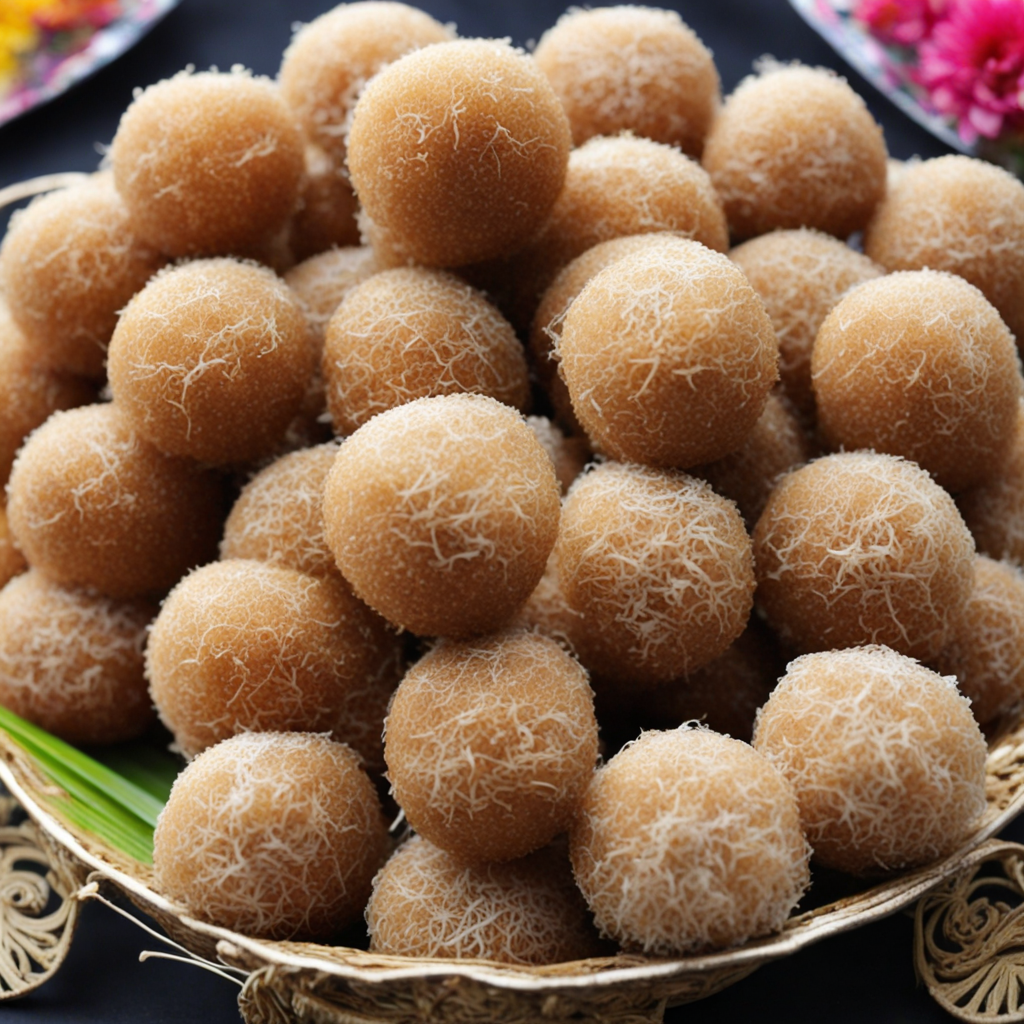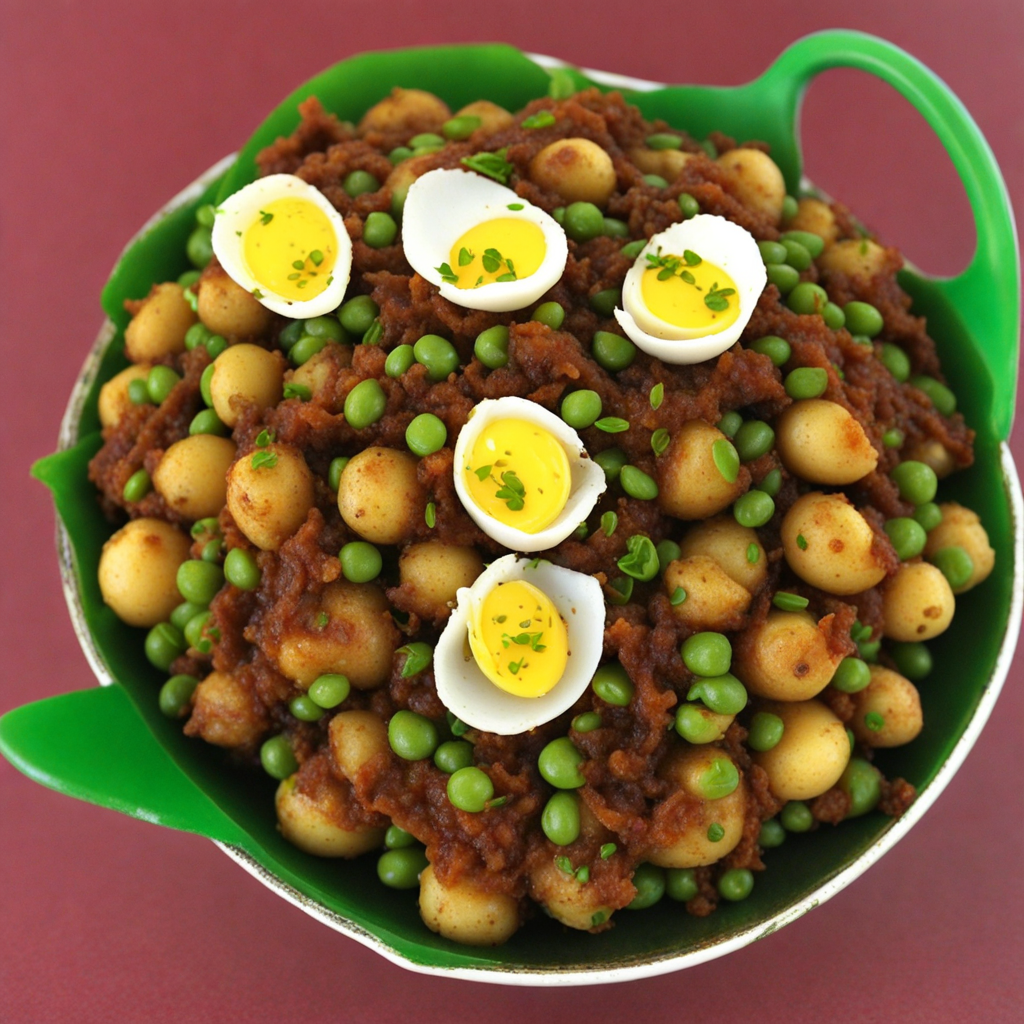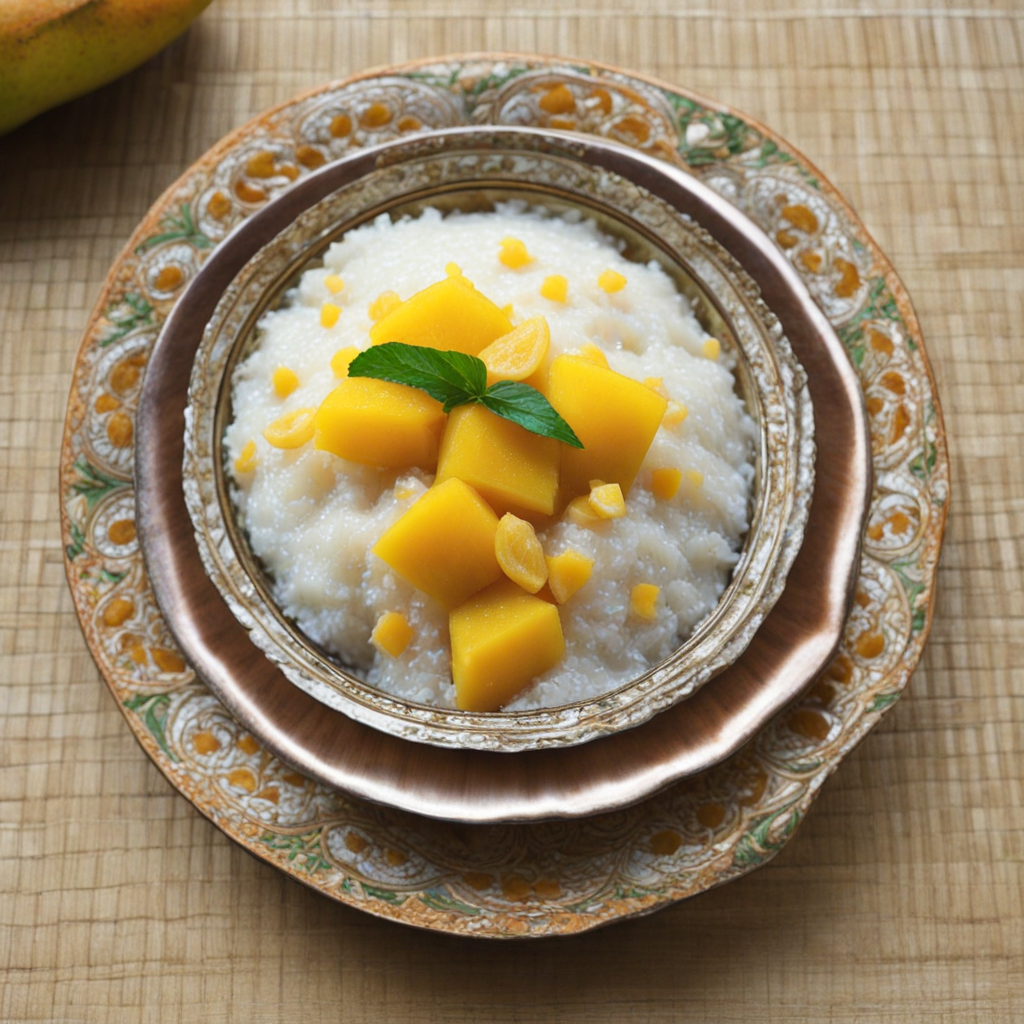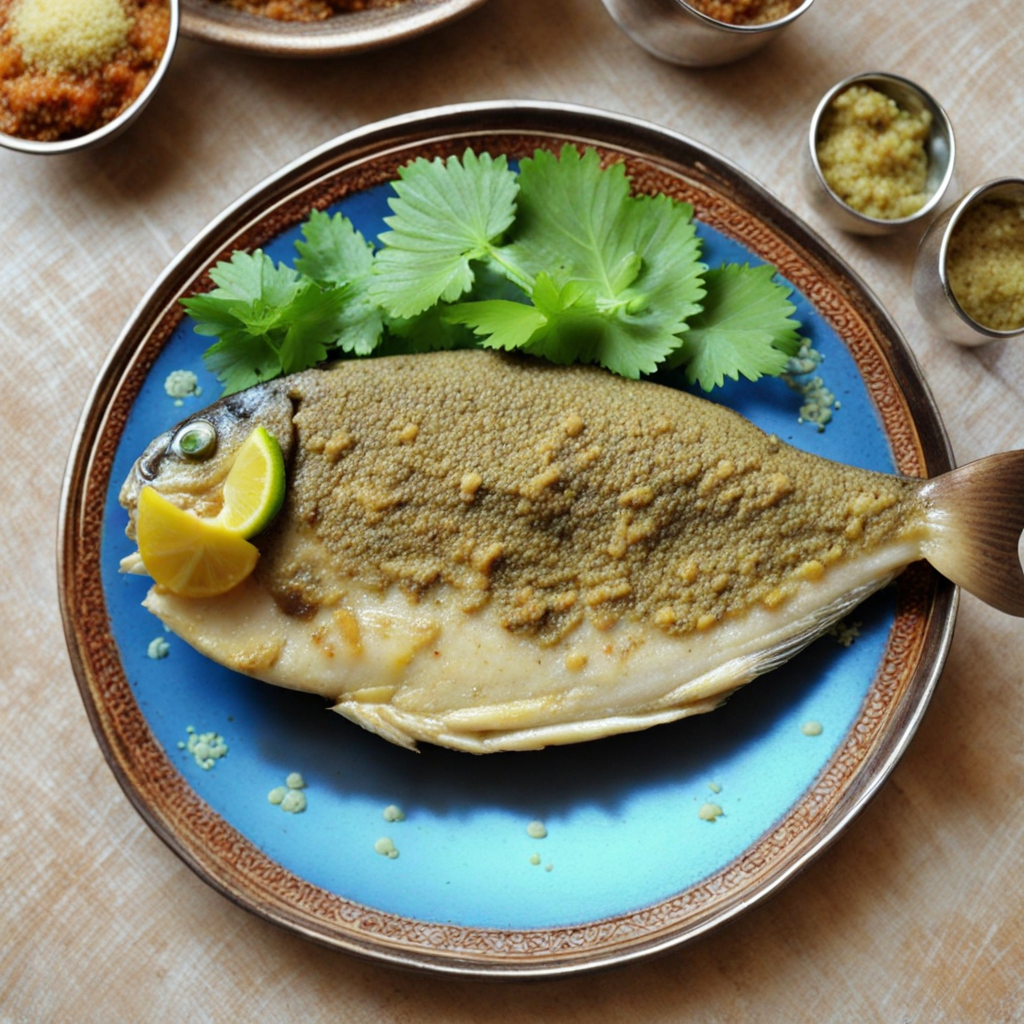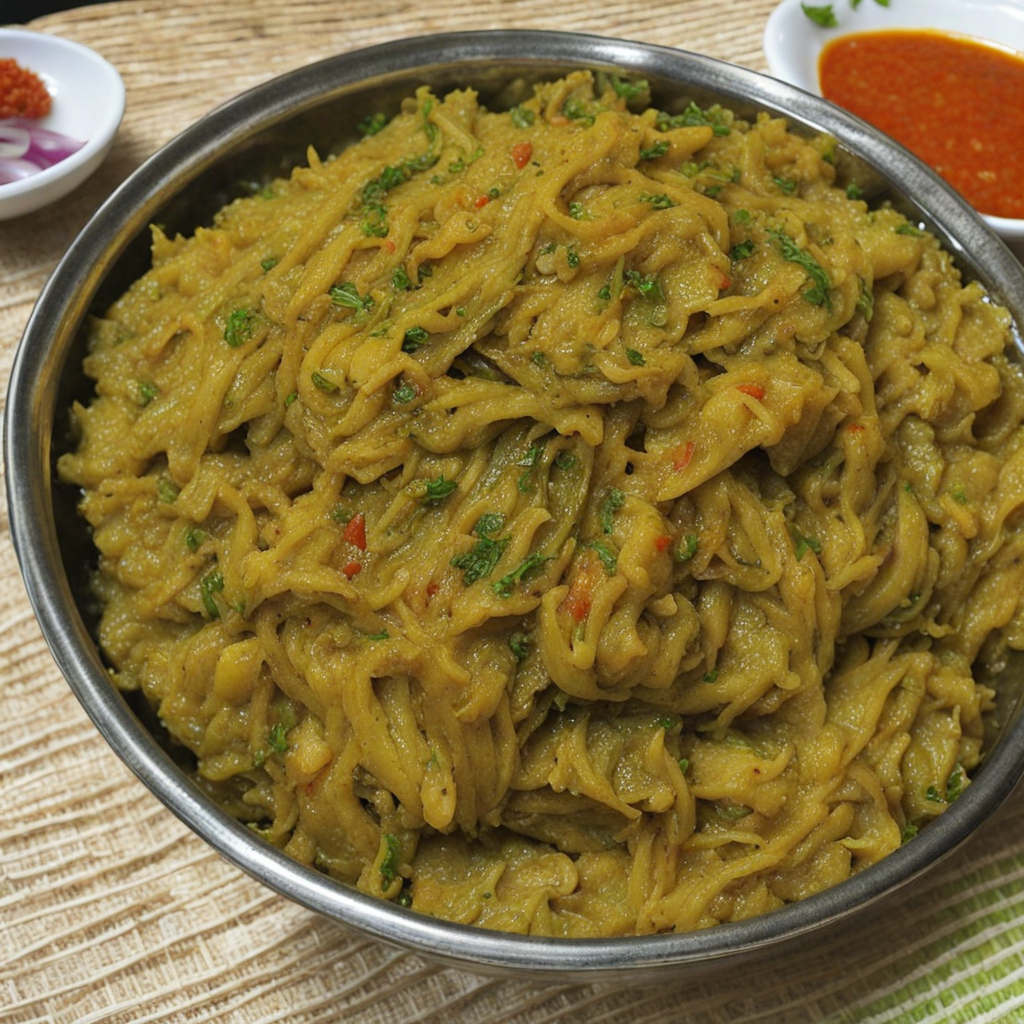Naru
Naru is a delightful traditional sweet treat from Bangladesh, often enjoyed during festivals and special occasions. This delicacy is made primarily from rice flour, coconut, and jaggery, which is a type of unrefined sugar derived from palm sap. The combination of these ingredients creates a unique texture that is both chewy and slightly crunchy, making each bite a delightful experience. The addition of coconut adds a natural sweetness and nutty flavor, while the jaggery infuses the dish with a rich caramel-like taste that elevates its overall profile. To prepare Naru, the rice flour is first roasted to enhance its flavor, then combined with grated coconut and melted jaggery. The mixture is then molded into small, round balls and allowed to cool, which helps it to set and firm up. This process not only allows the flavors to meld beautifully but also gives the Naru its distinctive shape and texture. The color of Naru is typically a warm, golden brown, inviting and rich in appearance, perfectly reflecting the earthy ingredients used in its creation. Naru is not just a treat; it carries with it a sense of nostalgia and cultural significance. Often prepared during celebrations like Eid and pujas, these sweet bites are shared among family and friends, symbolizing joy and togetherness. Each region may have its own variation, with some adding nuts or spices for an extra twist. For those looking to explore new flavors, Naru offers a sweet yet wholesome taste of Bangladeshi culinary tradition that is sure to enchant the palate.
How It Became This Dish
The History of Naru: A Sweet Journey through Time in Bangladesh #### Origins and Ingredients Naru, a beloved confection from Bangladesh, has roots deeply embedded in the country’s agrarian and cultural history. The term "naru" derives from the Bengali word "naru" (নাড়ু), which refers to a sweet made primarily from rice flour and jaggery. The basic ingredients of naru often include roasted rice flour, jaggery (a traditional unrefined sugar), grated coconut, and sometimes nuts or spices, depending on regional variations. This simple yet nutritious combination reflects the agricultural bounty of Bangladesh, where rice and sugarcane are staple crops. The origins of naru can be traced back to ancient times when communities relied on locally sourced ingredients to create sustenance. The use of jaggery, a product of sugarcane, dates back thousands of years in South Asia, and its incorporation into sweets like naru showcases the ingenuity of Bengali cooks who sought to balance flavor and nutrition. The process of making naru involves roasting rice flour until it achieves a nutty aroma, which is then mixed with melted jaggery and other ingredients to create bite-sized balls. This method of preparation highlights the resourcefulness of local communities, as they would often use what was available in their environment. #### Cultural Significance Naru is more than just a sweet treat; it is a symbol of tradition and community in Bangladesh. It is often prepared during festivals, religious ceremonies, and family gatherings. The act of making naru is typically a communal affair, bringing families and neighbors together. In rural areas, women often gather to prepare naru, sharing stories and laughter as they work. This social aspect of making naru fosters a sense of unity and reinforces cultural ties. One of the most significant occasions for preparing naru is during the festival of Poush Mela, which marks the harvest of winter crops. The festival, celebrated in January, is a time of joy and gratitude, and naru stands out as a traditional delicacy. It is also offered to guests as a gesture of hospitality, embodying the values of warmth and generosity that are central to Bangladeshi culture. Naru also finds its place in religious contexts. During the celebration of various Hindu festivals, particularly those dedicated to deities like Lakshmi, naru is prepared as a form of prasad (offering). This practice underscores the spiritual significance of food in Bengali culture, where culinary traditions are intertwined with religious beliefs. #### Evolution Over Time Over the centuries, naru has evolved while retaining its core identity. The basic recipe has seen variations that reflect regional tastes and innovations. For instance, in some areas, ground sesame seeds and nuts like almonds or pistachios are added, enhancing the texture and flavor. In urban settings, modern interpretations of naru may incorporate chocolate, dried fruits, or even fusion flavors, appealing to younger generations and a more global palate. The industrialization of food production has also impacted the way naru is made and consumed. While traditional methods remain prevalent, packaged versions of naru are now available in supermarkets, catering to busy lifestyles. However, these commercial products often lack the rich history and personal touch of homemade naru, which is still cherished for its authenticity. Moreover, globalization has introduced naru to a wider audience beyond Bangladesh. As the Bangladeshi diaspora spreads across the globe, traditional foods like naru serve as a way to connect with their heritage. Festivals and cultural events held by the Bengali community in countries such as the United States, Canada, and the UK often feature naru, allowing people to share their culinary traditions with others and foster a sense of belonging. #### Naru in Contemporary Society In contemporary Bangladesh, naru continues to hold a special place in the hearts of many. The sweet has transcended its role as a simple treat, becoming a part of the national identity. It is commonly found in sweet shops, where it is produced in large quantities to meet the demands of festive seasons and special occasions. Local vendors often add their unique touches, creating signature naru recipes that attract loyal customers. Additionally, the rise of social media has played a role in popularizing traditional foods like naru. Food bloggers and influencers highlight the importance of preserving culinary heritage, showcasing the preparation of naru through engaging videos and posts. This digital platform allows for the sharing of recipes and stories, ensuring that the tradition of making naru is passed down to future generations. #### Conclusion The history of naru is a testament to the rich culinary heritage of Bangladesh. Its simple yet profound ingredients tell the story of a land blessed with agricultural wealth and a culture that values community and tradition. From its ancient origins to its modern interpretations, naru has evolved but remains an enduring symbol of connection—between generations, families, and cultures. As Bangladesh continues to navigate the complexities of modernization, the significance of traditional foods like naru becomes even more pronounced. It serves as a reminder of the importance of preserving culinary practices that foster community bonds and cultural identity. Whether enjoyed during festive occasions or as a daily treat, naru encapsulates the essence of Bangladeshi life, inviting all to savor its sweetness and celebrate the rich tapestry of flavors that define this vibrant nation.
You may like
Discover local flavors from Bangladesh



